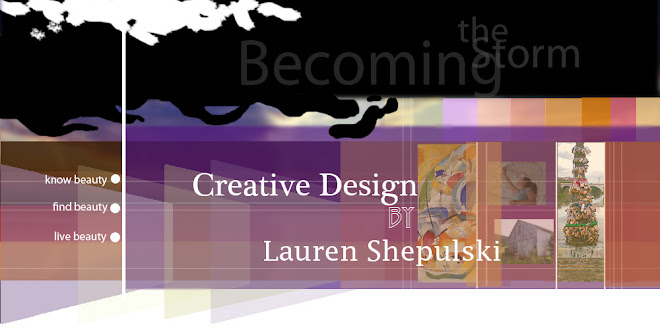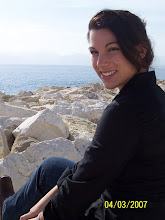Place Making for Plastic Minds – Interior Architecture Spring 2009
This semester’s studio has focused on developing design knowledge and skills while unfolding the design of an educational facility for Greensboro Day School.
The rationale for designing a middle school in an urban setting is to develop an awareness of environmental patterns that afford the opportunity for healthy exploration of childhood education:
At the scale of a neighborhood
Reuse of an existing building
Future visions for how children learn
This is achieved through exploration of patterns, processes and beauty.
Refreshing our posture: Posture describes the way we look at life, it’s a half empty vs. half full way of looking at things. A closed posture, like crossing your arms, blocks out the world, making you closed off to new ideas or ways of thinking. An open posture allows you to be more receptive to new ideas. Its not a matter of ‘This is what I could have done and I didn’t do a good job this time”, but rather, “This is an opportunity that I can explore next time.” The glass is always half full. Open posture helps the design process and allows you to absorb and appreciate the beauty that is everywhere around us.
We have been told that this studio places us in the ‘middle of the storm’. This concept was introduced last semester at a lecture seminar by John Lynn, one of the professors. He liken a storm to the built environment and humans interaction with it, saying that storms are agents of transformation, can be constructive/destructive, are dynamic and are a process. Designers can become the storm. We can take all the forces available and use them as a constructive force, beautifying the environment around us. I have adopted this concept, but I’m still struggling to grasp it completely every day.
Anyway, the studio has worked to incorporate these principles into this semester’s project. We are designing a middle school for Greensboro Day School in the existing facilities at Revolution Mills on Yanceyville Street in Greensboro. The middle school will house 200-400 students.
The first half of the semester has been dedicated to re-teaching the students on how to think about design. In the past, students have learned to take a project and dive in, thinking about space requirements, colors, flow and use. This studio has taught us to think first about the most important aspect of any space. What is the beauty here? What could it be? What do you see? What do the people that will be using the space see?
The project:
We have developed a Programming Document that lays out the following:
About the Studio
About the Greensboro Day School
About Revolution Mills: Historic considerations, General statements
Design Considerations/Resources to be incorporated: Secretary of the Interior Standards for Rehabilitation, LEED Standards, AIA 50 to 50, Light Imprint
Building Focus Area: Scope of Focus Area, narrative, charts, photos, Quantified Tabulation (quantities/qualities), historic considerations, and visual vignettes
Our group has written up the program for the Music Community at Revolution Mills, consisting of 2 band spaces, a chorus space, an orchestra space, offices, storage spaces, practice rooms, and a breakout space.
We have chosen our concept, or intent for the space, to be:
Voicing the Soul through Music and Space
Music is an art form in which the creation, performance, significance and even definition may vary according to culture and social context. In so many ways, music is different from other disciplines. It is abstract, transcendent, constantly evolving, and can be ethereal and in-your-face at the same time. But most importantly, music cannot be contained. It can, however, be housed, and that space should honor its unique attributes by voicing the true soul of music.
In the context of a middle school music community, ‘voicing the soul’ is a concept that deals with personal development through the expression of music. Middle school is an uncertain time in a child’s developmental stages, where they are trying to fit it and stand out at the same time. Music can help to organize and give meaning to a somewhat chaotic time in development, by enabling one’s voice to be heard through the music itself, its interpretation or its space. Many elements enhance and enable this expression.
Music as an Outlet for Creativity
Music in all forms acts as an outlet for creativity. The common trend in today’s education, at least up until now, has been to snuff out children’s creativity, forcing them to accept and regurgitate information. Music and music education functions much differently, thriving on and reintroducing creativity back into the curriculum. Spaces should not only be functional, but should celebrate music, honoring personal and group achievements.
Musical and Educational Versatility
Nation wide, educators have voiced the importance of a project based education, and music education is no different. The creation and appreciation of music in all its forms is always a work in progress. Project based education in music allows students to learn to act on and explore personal interests. Individuals can work on composition, groups can work together to find that perfect pitch, and ensembles can achieve harmony and balance through flexible spaces.
This introduces another important aspect of music education in the 21st century; that of elastic and versatile spaces. Who ever made the rule that a space had to serve one purpose? The designs for Revolution Mills will break the mold, letting music spill out into every aspect of children’s and educators’ lives. Want to create a music community both spatially and intellectually. The physical connection of the music spaces to other art disciplines will not only help the free flow of people between the disciplines, but will also encourage the dissemination and exchange of different ideas.
Versatility is not just a spatial concept, but is a teaching method that can be supported by the actual space it resides in. Music education in the 21st century needs to accommodate different learning methods and speeds at which this learning takes place. Not everyone learns at the same pace or in the same way. Some children cannot read music, but can see music in their mind, while other children may be able to read music but have trouble connecting to it and actually seeing it. Spaces need to be elastic and inspiring, appealing to the physical and mental eye.
Music and Stimulation
Stimulation is another major aspect of music. While music is aurally stimulating, the spaces that accommodate it should be equally motivating. Stimulation in a music environment can be conceptualized in a three prong approach. The environment provides visual stimulation, the music provides aural stimulation, and the students provide tactile and intellectual stimulation. These three pathways are simultaneously stimulating, creating a dynamic environment through thought and space.
Music and Technology
Planning for a music education space would not be a complete conversation if the importance of technology was not addressed. Technology in music is not only creating new outlets for expression, but serves to enhance current and past forms. The music spaces at Revolution Mills will allow for composition, education and theory, as well as web based projects and recording.
Music and Health Benefits
Recent studies have shown that music has positive effects on intelligence, mental health and immunity. Tests have shown more grey matter in the auditory cortex of the right hemisphere in musicians compared to non musicians. Music has also shown to enhance memory and positively effect cognition and health (The Neurosciences and Music II, Annals of the New York Academy of Sciences). Specifically applicable to middle school children, studies have shown that students involved with music do better in school, showing positive effects on reading and mathematic achievement in early childhood and adolescence (The Impact of Music on Childhood and Adolescent Achievement, Social Science Quarterly).
In order to accommodate all these assets of music, Greensboro Day School will require several types of music spaces. Students will need access to 2 band spaces, one chorus space, an orchestra space, a dance studio, practice rooms, as well as a breakout room. In addition to this, instructors will require offices spaces. Most areas will require access to windows to allow for natural light and ventilation, as well as access to an outdoor loading zone. Spaces need to be adjacent to one another, and due to the noise produced by this community, it would be better to be located in a corner area at the mill
Tuesday, March 3, 2009
Subscribe to:
Post Comments (Atom)



No comments:
Post a Comment